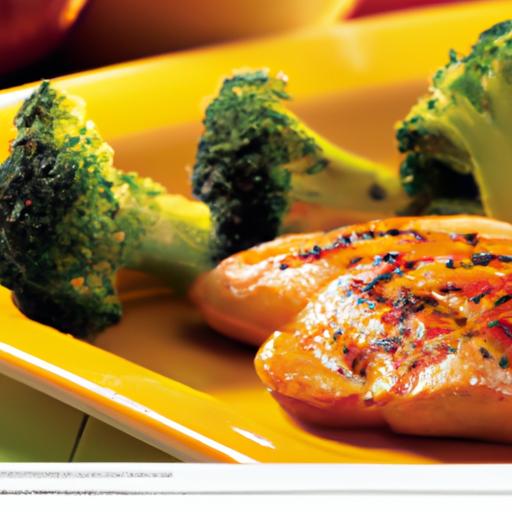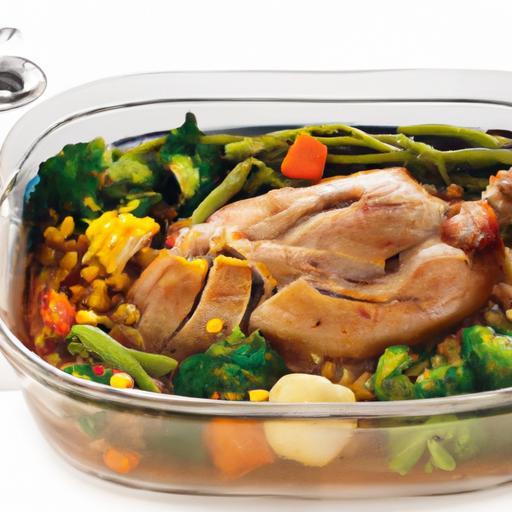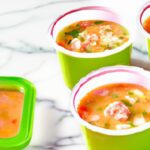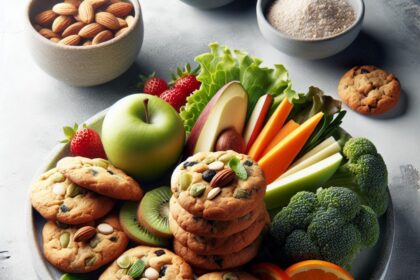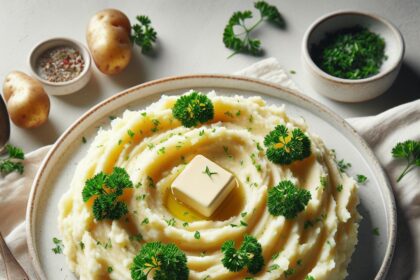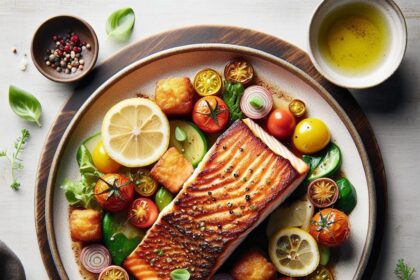When it comes to savoring last night’s dinner or reheating a holiday feast, nothing spoils the moment faster than worrying whether your leftovers are safe to eat. Enter the unsung hero of the kitchen: the food thermometer. More than just a gadget, a reliable food thermometer is your trusty sidekick that ensures every bite is not only delicious but free from harmful bacteria. In this article, we’ll explore the top food thermometers that help you maintain perfect temperature control, keep your meals safe, and preserve that just-cooked taste-even days later. Say goodbye to guesswork and hello to confidently tasty leftovers every time!
Choosing the Right Food Thermometer for Accurate Temperature Checks
Top Food Thermometers to Keep Your Leftovers Safe & Tasty provide a crucial tool for any kitchen, ensuring every reheated dish hits the ideal temperature to protect both flavor and food safety. Whether you’re savoring a rich stew or warming up a delicate casserole, an accurate thermometer is your best culinary companion.
Prep and Cook Time
- Preparation: 2 minutes (for thermometer calibration and setup)
- Use: Instant read during reheating or cooking, typically under 1 minute per check
Yield
- Provides temperature readings for any quantity of food to ensure safety and flavor retention
Difficulty Level
- Easy to use; requires minimal technical skill to operate effectively
Essential Features to Look for in a Reliable Food Thermometer
- Accuracy: Select a thermometer with a margin of error of ±1°F for precision.
- Quick Read Time: Instant-read models offer results in 2-3 seconds, reducing heat loss.
- Temperature Range: It should cover low to high temps (e.g., 32°F to 425°F) to handle various foods.
- Digital Display: Clear, backlit screens help in dim kitchen settings.
- Durability and Waterproof Design: Essential for easy cleaning and longevity.
- Probe Flexibility: Thin, pointed probes make insertion effortless without damaging food texture.
Top Food Thermometers for Maintaining Safety and Flavor in Leftovers
- ThermoPro TP05 Digital Instant Read Meat Thermometer: Reliable and budget-friendly, it offers a fast display and precise readings-perfect for daily leftover checks.
- ThermoWorks Thermapen ONE: Although pricier, this is the gold standard with lightning-fast reads and rugged build quality.
- Lavatools Javelin PRO Duo: Combines an easy-to-read screen with long battery life and waterproof construction, ideal for busy kitchens.
- OXO Good Grips Chef’s Precision Digital Instant Read Thermometer: Ergonomic design with a large display, perfect for users looking for comfort and style.
Expert Tips for Using Food Thermometers to Prevent Foodborne Illness
- Calibrate Your Thermometer: Always perform a quick calibration test with ice water (should read 32°F) and boiling water (212°F at sea level).
- Probe Placement: Insert the probe into the thickest part of the food without touching bone or the container to get accurate readings.
- Check Temperatures in Multiple Spots: Particularly in large leftovers, temperature varies-check 2-3 spots for consistent safety.
- Clean After Each Use: Prevent cross-contamination by sanitizing the probe with hot, soapy water or alcohol swabs.
- Know Safe Temperature Zones: Reheat leftovers to at least 165°F to kill harmful bacteria while preserving texture and flavor.
- Use Thermometers for Various Foods: From soups to roasts and casseroles, thermometers ensure each dish reaches the perfect serving temperature.
Ingredients for a Perfect Food Thermometer Experience
- 1 digital instant-read food thermometer with probe
- 1 container of ice water (for calibration)
- 1 hot water source or boiling water pot (for calibration)
- Cleaning supplies: alcohol wipes or antibacterial soap
- Leftovers or food to test
Instructions
- Calibrate Your Thermometer. Immerse the probe in ice water for 30 seconds; ensure it reads 32°F. Repeat in boiling water-it should read 212°F. Adjust if your thermometer allows calibration.
- Prepare your leftover dish. Stimulate warmth or ready cold food as needed for reheating.
- Insert the probe. Slide the thermometer probe into the thickest, center part of your food, avoiding bones or container edges.
- Read temperature. Wait 2-3 seconds for an accurate reading. If below 165°F for leftovers, continue heating.
- Repeat checks. Take at least 2 more readings in different areas to confirm consistent temperature.
- Clean your thermometer. After use, sanitize the probe with alcohol wipes or warm soapy water to maintain hygiene and prevent cross-contamination.
Chef’s Notes & Tips for Success
- Thermometer Care: Always store your food thermometer away from heat sources and moisture to prolong its lifespan.
- Use for All Food Types: From thick meats to creamy casseroles, trusted readings ensure no overcooking or unsafe temperatures.
- Make-Ahead Tips: Check temperature after reheating leftovers, never guessing-it safeguards against foodborne illnesses.
- Substitutions: For no-contact options, infrared thermometers measure surface temperatures but are less accurate inside dense foods.
- Battery Check: Regularly test battery life for uninterrupted, accurate use.
Serving Suggestions
Use your leftover dishes with confidence by reinvigorating them on a warming platter or simple serving bowls accented with freshly chopped herbs like parsley or chives. A garnish of microgreens adds a fresh pop of color, visually emphasizing the care and attention you gave to ensuring your dish is both safe and scrumptious. Pair with a crisp green salad or warm crusty bread to round out a delicious, worry-free meal.
| Nutrient | Amount per serving |
|---|---|
| Calories | Varies by leftover dish |
| Protein | Maintained by safe reheating |
| Carbohydrates | Preserved flavorful starches |
| Fat | Stabilized with precise temperature control |
Explore more about keeping your kitchen safe and hygienic and for expert guidelines on safe temperatures, visit the CDC Food Safety website.

Q&A
Q: Why is it important to use a food thermometer for leftovers?
A: Reheating leftovers might seem straightforward, but ensuring they reach the right internal temperature is key to preventing foodborne illnesses and preserving their original flavor and texture. A reliable food thermometer takes the guesswork out, making every bite safe and savory.
Q: What features should I look for in a food thermometer for leftovers?
A: For leftovers, speed and accuracy are paramount. Look for digital thermometers with an instant-read function, a wide temperature range, and easy-to-clean probes. A backlit display and a foldable design add convenience for quick kitchen checks.
Q: Can a food thermometer help improve the taste of reheated leftovers?
A: Absolutely! Overheating can dry out your delicious dishes, while underheating can leave them unsafe. Using a thermometer ensures you hit that perfect temperature sweet spot-warm enough to bring out flavors and keep moisture intact, but never overdone.
Q: What types of food thermometers are best suited for leftovers?
A: Instant-read digital thermometers are top picks for leftovers because they provide fast results without poking too much. Infrared thermometers are great for surface temperatures, but they might miss the core warmth. Probe thermometers with timers work well if you reheat in the oven.
Q: How do I properly use a food thermometer on leftovers?
A: Insert the probe into the thickest part of the food, avoiding bones or sauce pools. Wait for the temperature to stabilize-usually just a few seconds for digital models-then check that the temperature hits at least 165°F (74°C), the safe reheating guideline recommended by food safety authorities.
Q: Are there any must-try food thermometer brands for leftovers?
A: Brands like ThermoPro, Lavatools, and Taylor often top the charts with their accuracy, durability, and user-friendly designs. They offer models specifically crafted to make reheating leftovers safe and hassle-free.
Q: How often should I calibrate or replace my food thermometer?
A: Regular calibration, every few months or after heavy use, keeps readings accurate. Replace your thermometer if it shows inconsistent temperatures or physical damage. A reliable thermometer is an investment in your health and your meal’s deliciousness.
Q: Can a food thermometer help with meal prep and portioning leftovers too?
A: Definitely. It’s not just for reheating-checking temperatures during initial cooking and cooling helps lock in safety and quality. Plus, knowing precise internal temps assists in portioning leftovers with confidence, ensuring every packed meal is fresh and tasty.
Embrace the science of temperature control and let your leftovers shine safely with the perfect food thermometer by your side!
The Conclusion
In the quest to savor every last bite without compromising safety or flavor, a reliable food thermometer becomes your kitchen’s unsung hero. From digital probes that deliver instant readings to smart devices that sync with your phone, these tools empower you to reclaim your leftovers with confidence. Remember, keeping your food at the right temperature isn’t just about taste-it’s about protecting your health and making every meal a safe delight. So, equip your kitchen arsenal with one of these top food thermometers and turn every leftover into a delicious encore worth repeating. Safe cooking, happy eating!